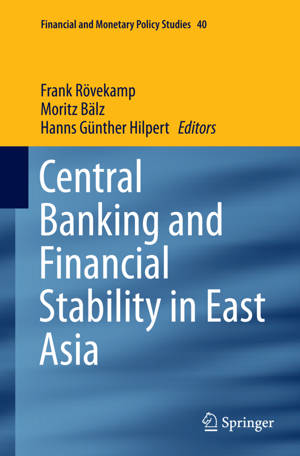
- Afhalen na 1 uur in een winkel met voorraad
- Gratis thuislevering in België vanaf € 30
- Ruim aanbod met 7 miljoen producten
- Afhalen na 1 uur in een winkel met voorraad
- Gratis thuislevering in België vanaf € 30
- Ruim aanbod met 7 miljoen producten
Zoeken
Central Banking and Financial Stability in East Asia
€ 125,95
+ 251 punten
Omschrijving
This book explores financial stability issues in the context of East Asia. In the East Asian region financial stability has been a major concern ever since the Asian crisis of 1997/98, which still looms large in the collective memory of the affected countries. The global crisis, which had its starting point in 2007, only served to exacerbate this concern. Safeguarding financial stability is therefore a major goal of any country in the region. Diverging cultural, political and economic backgrounds may however pose different stability challenges and necessary cooperation may be complicated by this diversity. Against this backdrop the contributions of this book by leading academics from the fields of economics and law as well as by practitioners from central banks shed light on various financial stability issues. The volume explores the legal environment of central banks as lenders of last resort and analyzes challenges to financial stability such as shadow banking and the choice of exchange rate regimes. Case studies from China, Japan and Indonesia are contrasted with experiences from Europe.
Specificaties
Betrokkenen
- Uitgeverij:
Inhoud
- Aantal bladzijden:
- 187
- Taal:
- Engels
- Reeks:
- Reeksnummer:
- nr. 40
Eigenschappen
- Productcode (EAN):
- 9783319385426
- Verschijningsdatum:
- 17/10/2016
- Uitvoering:
- Paperback
- Formaat:
- Trade paperback (VS)
- Afmetingen:
- 156 mm x 234 mm
- Gewicht:
- 290 g

Alleen bij Standaard Boekhandel
+ 251 punten op je klantenkaart van Standaard Boekhandel
Beoordelingen
We publiceren alleen reviews die voldoen aan de voorwaarden voor reviews. Bekijk onze voorwaarden voor reviews.







